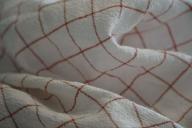There are several actions that people might think are helping wild animals, but in reality, these actions can often do more harm than good.
It's important to have a good understanding of wildlife and their needs to ensure that our actions truly benefit them.
Here are some common things people do that might not actually help wild animals.
Feeding Wildlife
While it might seem kind to feed wild animals, it can lead to dependency on humans for food, alter natural behaviors, and create overcrowding.
It can also lead to the spread of diseases among animals and negatively impact their health.

Approaching or Touching Wildlife
Getting too close to wild animals or attempting to touch them can cause stress and fear, potentially leading to injury or abandonment of young animals by their parents.
Taking Wildlife as Pets
Capturing and keeping wild animals as pets can be harmful to both the animals and humans.
Wild animals have specific needs that are difficult to meet in a domestic setting, and they may carry diseases that can be transmitted to humans.
Intervening with Young Animals
Well-meaning individuals might assume that a young animal is abandoned and try to rescue it.
However, many times, the parent is nearby and temporarily leaves the young animal while foraging for food.
Providing Inappropriate Food
Offering human food to wild animals can lead to nutritional imbalances and health issues.
Animals have specific dietary needs that might not be met with human food.
Introducing Non-Native Species
Introducing non-native plants or animals to an ecosystem can disrupt the balance and threaten local biodiversity.









